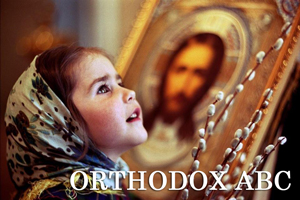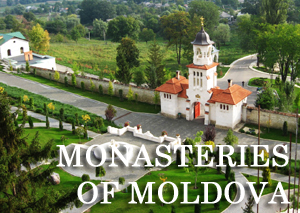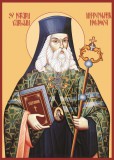
Saint Metropolitan Varlaam of Moldova served in the highest ecclesiastical position of the Principate of Moldova in the period between 1632-1653 and is recognized, because of his written works, as one of the founders of the modern Romanian language.
He was born in 1590 as Vasile Moţoc, in family of free men from the Village Borceşti, near Târgu Neamţ. In his time there was still practiced the serfdom in some regions in Moldova, so that being a free man it was already a special status.
Still young, Vasile was familiar with the monastic life, because he used to spend a lot of time in the Hermitage Zosim, a small residence of the monks in Secu valley. Here he could learn old Slavonic and Greek, the languages used in the Church and in the official documents during his time. Not far away from here, in the same time the Vornic (internal and justice minister) Nestor Ureche and his wife Mitrofana have founded a monastery named Secu in 1602, and also a school in its dependencies. Here Vasile received the tonsure as monk, being named Varlaam and even still young he was elected as egumen (abbot) of the monastery, because of his high knowledge.
At Secu, Varaam translated Leastviţa (The Ladder of St. John Climacus), this being one the first writings of the Churchfathers available in Romanian. Shortly, the Metropolitan Anastasie Crimca (1608-1629) appointed him in the rank of archimandrite and since 1628 he became an important counselor of Voivod Miron Barnovschi (1626 – 1629 and 1633). From this position he was sent to Kiev and Moscow to purchase some icons from the monasteries Dragomirna and Bârnova and for Barnovschi church, built by the Voivod in Iaşi, the capital of Moldova.
On his way back home in 1629, Varlaam heard about the death of Metropolitan Anastasie and the removal of Miron Barnovschi, so he retired at Secu. The short retirement ended in 1632, when during the second reign of Alexandru Iliaş (1620 – 1621 and 1631 – 1633), he was elected to follow the position of the recently dead Metropolitan Athanasie (1629-1632).
Metropolitan
Metropolitan Varlaam understood his pastoration as a big responsibility as teacher, ruler and mediator in prayers for his community, and he had the chance to have together a very pious ruler in the person of Voivod Vasile Lupu (1634 – 1653), who helped him in the action of modernization of the educational system in the country.
During his pastoration years it happened a very important event for the Orthodox Church, namely the Synod form Iaşi (1642), this being the first council of the entire Orthodox Church after the Schism. At this Synod it was debated and approved the Confession of Faith written by Petru Movilă, Metropolitan of Kiev in 1638. This work was at its time (and even today) very important, being built as the first Orthodox Catechism since the Age of St. John Damascene (7th century), and useful as a handbook for the Orthodox clergy and laymen confronted with the action of Calvinization and Uniatism. Probably after this Synod, Metropolitan Varlaam became very popular even abroad, that he was the only Romanian hierarch among the candidates for the seat of the Ecumenical Patriarch of Constantinople. This happened in 1639, but the elected one was Parthenios I, the former Metropolitan of Adrianopolis.
Another important event happened in this period was the moving of the relics of St. Parascheva at Iaşi, in 1641. The Voivod Vasile Lupu helped then the Ecumenical Patriarchate of Constantinople with a big amount of money, and in gratitude for the help offered, the Patriarch Parthenios offered for the Metropolis the relics of the Saint, who became very popular in Moldova until today. At that time, the relics stayed in the new monastery of the Three Hierarchs, until their moving in the new Metropolitan Cathedral, in 1889, where they can be found until today.
The foundation at “Trei Ierarhi” Monastery
Metropolitan Varlaam together with the Voivod Vasile Lupu founded in Iaşi in 1639 a new monastery dedicated to the three Hierarchs, Basil the Great, Gregory form Nazianzen and John Chrysostomus. The church of the monastery is a masterpiece of art and architecture of the 17thcentury, and one of the halls of the monastery, known today as “The Gothic Sall” was the place where the Synod reunited in 1642. Even from its foundation in 1639, the monastery hosted the first printing machine in Moldova. Here there were printed several liturgical but also apologetical books, namely Cazania, The seven Sacraments, Answer against the Calvinist Catechism and a book of religious and secular law, called Pravila.
Cazania or Romanian Book for teaching in the Sundays all over the year, at the imperial feasts and the great saints’ days (Cazania sau Carte românească de învăţătură la duminicile de peste an, la praznice împărăteşti şi la sfinţi mari, 1643) is the first book printed in Romanian language in Moldova. Its importance consists in the fact that it was spread in all the Romanian provinces, especially in Transylvania, where the action of calvinization was very strong, imposed by the Hungarian rulers who adopted the Reform. Another importance given by this book is the language used, which presents a step forward to the modern Romanian, after the translations realized in Transylvania by deacon Coresi, in the middle of the 16th century. In the double preface of the book, the first written by Voivod Vasile and the second by Varlaam, there are some mentions of the national and linguistic unity between the Romanians in Moldova, Wallachia and Transylvania. This might be one of the first signs of the national conscience among the Romanians.
In 1644 Varlaam publishes Seven Mysteries of the Church (Şapte Taine a Bisericii), another important catechetical book, written in the form of questions and answers. This systematization of the Orthodox teaching is one of the first statements about the seven Sacraments, but still not entirely original, being a compilation based of the work of Toma Teofan Eleavulkos (written in the same century).
Another important printed book for the period is a praying book, namely the Paraclis of the Theotokos (Paraclisul Maicii Domnului) a hymn similar to the western Rosarium, in 1645.
The Answer against the Calvinist Catechism (Răspunsul la catehismul Calvinesc, 1645) was probably printed in a double edition, at Iaşi in Moldova and at Dealu Monastery In Wallachia, as a joint action of Varlaam and Teofil of Wallachia (1636-1648) against the Calvinist missions. The Calvins printed a Catechism in Romanian at Alba Iulia in 1642, this being seen as an action to attract adepts among the Romanians especially from Transylvania but also from Moldova and Wallachia. Because of this possible danger, Varlaam convoked a synod of the hierarchs in Moldova and Wallachia about in 1644-1645, who approved the text of his work. The importance of the Answer of Varlaam consists in its originality and also in the quality of the language. Varlaam composed this work as a pamphlet against the teaching of Calvin, and even if full of resentments, the author tries to write into a civilized language. This book is the first apologetic Romanian work.
Metropolitan Varlaam together with the Voivod Vasile Lupu founded in the Monastery of the Three Hierarchs also first high school in Moldova (1640) after the model of the Kievean Spiritual Academy, founded by St. Petru Movilă. The students learned here theology, Greek, Slavonic but also Romanian, together with some other matters such as, philosophy, rhetoric, poetics, dialectics, arithmetic, geometry, astronomy, grammar and music. The first teachers of the school were sent here by the Metropolitan of Kiev Peter Movilă, who has shown for many times the affection of his homeland. Anyway, after the abdication of Vasile Lupu, the school decays.
Retirement
Voivod Vasile Lupu lost his throne in 1653, and shortly after, the Moldavian chronicler Miron Costin attests that Metropolitan Varlaam decided to retire to his monastery, at Secu, where he lived the last four years of his life as a simple monk in humility and prayer. The decision may be influenced also by the fact that Varlaam suffered since 1653 of a paralysis of the hands. He died on December 19, 1657 and, according his Testament, he gave all he had to the monastery at Secu. He was buried in the exterior side of the church’s south wall.
The veneration of St. Varlaam
The canonization of Metropolitan Varlaam as a saint happened after a decision of the Holy Synod of the Romanian Orthodox Church from February 12, 2007. The canonization ceremony happened at Secu Monastery on August 29, when his relics were exhumed and put in a silver coffin in the church of the monastery. His memorial day is August 30, in the same day of the celebration of the Saints Alexander, John and Paul the New, Patriarchs of Constantinople.
Troparion (Hymn) of St. Varlaam
“Worthy servant of Christ and wise defender of the true faith, great worshiper of Saint Parascheva and faithful enlightener of the Romanian people, Holy Hierarch Varlaam, pray Christ-God to protect and save our souls!”
Source: Theodialogia
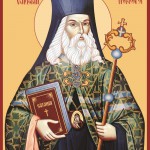
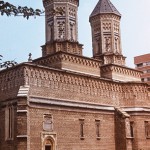


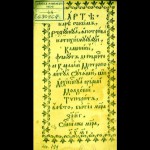
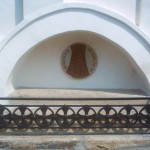
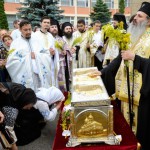
 Memorial house of romanian elder Sofian Boghiu Consecrated in his native Village
Memorial house of romanian elder Sofian Boghiu Consecrated in his native Village 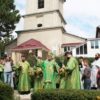 On the 14th Sunday after Pentecost, His Eminence Metropolitan Vladimir celebrated the Divine Liturgy in the St. Nicolas Monastery, Dobrusa village, Soldanesti region
On the 14th Sunday after Pentecost, His Eminence Metropolitan Vladimir celebrated the Divine Liturgy in the St. Nicolas Monastery, Dobrusa village, Soldanesti region  Inauguration of the volume of articles presented at the National Scientific Conference “The Orthodox Church and the State: Faith and Knowledge”
Inauguration of the volume of articles presented at the National Scientific Conference “The Orthodox Church and the State: Faith and Knowledge” 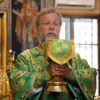 The 12th Sunday after Pentecost – kindness in God changes the world we live in
The 12th Sunday after Pentecost – kindness in God changes the world we live in 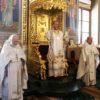 The 11th Sunday after Pentecost – loving our God and our neighbor
The 11th Sunday after Pentecost – loving our God and our neighbor 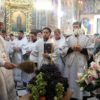 The Transfiguration of the Lord, celebrated in the Nativity of the Lord Cathedral in Chisinau
The Transfiguration of the Lord, celebrated in the Nativity of the Lord Cathedral in Chisinau 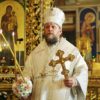 His Eminence Metropolitan Vladimir celebrates 65th anniversary
His Eminence Metropolitan Vladimir celebrates 65th anniversary  Divine Service at the St. Theodore of Tyre Monastery (Ciuflea) in Chisinau, and congratulation of Archimandrite Nicolae (Rosca), the Monastery’s confessor-administrator, on the 50th anniversary.
Divine Service at the St. Theodore of Tyre Monastery (Ciuflea) in Chisinau, and congratulation of Archimandrite Nicolae (Rosca), the Monastery’s confessor-administrator, on the 50th anniversary.  The Tenth Sunday after Pentecost: Divine Liturgy in the Nativity of the Lord Cathedral in Chisinau
The Tenth Sunday after Pentecost: Divine Liturgy in the Nativity of the Lord Cathedral in Chisinau 
